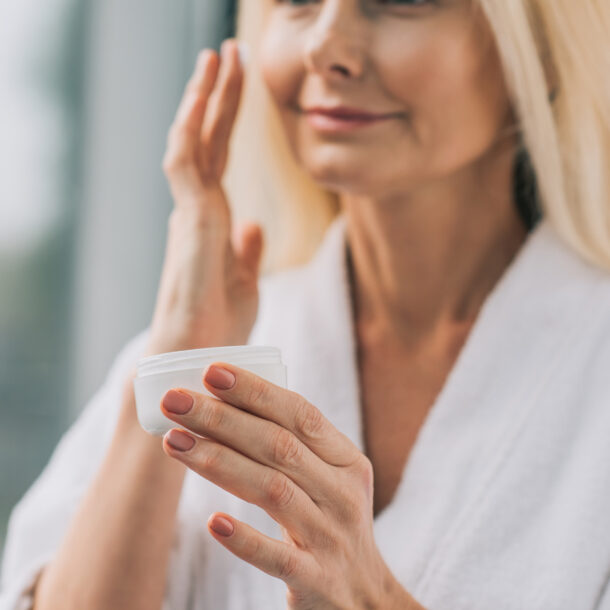
Close
In the skincare world, we are always on the hunt for the next great ingredient, and one such unconventional yet intriguing ingredient that has gained popularity in recent years is snail mucin. I have seen a number of “influencers” on social media singing the praises of snail mucin! Derived from the secretion of snails, this slimy substance is believed to have a range of skin-enhancing properties. However, like any skincare product, it has pros and cons. This article will dive deep into snail mucin, discussing everything from what these snails eat to potential issues like perioral rashes. Eek!
One of the most crucial factors in snail mucin production is the breeders and what they feed them. Snails are not the typical pets you might imagine, but instead, they are meticulously bred creatures explicitly raised for their mucin. What they eat directly affects the quality of the mucin they produce. Breeders often provide snails with a controlled diet rich in nutrients, such as fruits, vegetables, and medicinal plants. The healthier the snails’ diet, the more potent and beneficial their mucin becomes. This aspect can be considered a pro, as it ensures that the snail mucin is high quality. However, the product labeling rarely discloses what the breeders feed their snails.
One significant drawback to snail mucin as a skincare ingredient is that it is not FDA-approved. This means there needs to be more official oversight, leaving consumers to rely on manufacturers’ claims and anecdotal evidence. However, it’s essential to note that the lack of FDA approval doesn’t necessarily mean snail mucin is unsafe. Many skincare products fall into this category, and the absence of approval is often due to a lack of comprehensive studies rather than direct safety concerns.
The production of snail mucin is highly dependent on the snail population. The mucin is extracted by carefully encouraging the snails to secrete it, and the quantity available can vary significantly depending on factors such as the snails’ age and overall health. This inconsistency can be a downside as it affects the availability and price of snail mucin products. Skincare enthusiasts may find it frustrating when their favorite product is temporarily out of stock or when the formulation changes due to a change in the snail population.
The unique aspect of snail mucin is that snails use this slimy secretion for mobility and reproductive purposes. While some might find this off-putting, it’s essential to consider the potential benefits. In its purest form, Snail mucin contains compounds like hyaluronic acid, glycoproteins, and glycolic acid. These components can improve hydration, reduce inflammation, and skin regeneration. It might not be evident for everyone, but many users have reported smoother, plumper skin after incorporating snail mucin into their skincare routine.
One of the most celebrated advantages of snail mucin is its potential to stimulate collagen production and provide exfoliating benefits. Collagen is crucial for maintaining skin’s elasticity and youthful appearance. While the effects might not be immediate or as dramatic as some skincare claims suggest, consistent use of snail mucin products can contribute to healthier, more resilient skin.
Snail mucin is purportedly most effective when applied to adequately moisturized skin. It is advertised as a hydrating booster that locks in moisture and other skincare ingredients. Applying snail mucin early in your skincare routine is recommended before other products like hyaluronic acid (HA) and vitamin C. This allows snail mucin to create a hydrating base upon which subsequent products can work their magic. This application order is a significant pro, as it optimizes the benefits of snail mucin in your skincare routine.
As with any skincare product, individual reactions can vary. Some users have reported experiencing rashes, particularly in the perioral area, after using snail mucin products. This can be a concerning con, especially for individuals with sensitive skin. It’s essential to perform a patch test before incorporating snail mucin into your routine and to discontinue use if any adverse reactions occur.
As you may have seen on Instagram, I am testing out Snail Mucin for myself. As a medical esthetician, I believe it is my duty to vet out a trend like this thoroughly. My initial observations? It is sticky/tacky compared to what I typically use on my patient’s skin. Also, I have discovered my skin feels dry at the end of the day. However, I am adjusting the amount I use to see how that goes, and I want to give it more time to see if I experience any increased collagen production.
Stay tuned for my insights and opinions on this crazy trend in skincare!